A Quick Look at Qualcomm’s 5G Smartphone Reference Design
by Ian Cutress on December 11, 2018 10:00 AM EST- Posted in
- Smartphones
- Qualcomm
- Mobile
- 5G
- X50
- Snapdragon 855
- Qualcomm Summit 2018
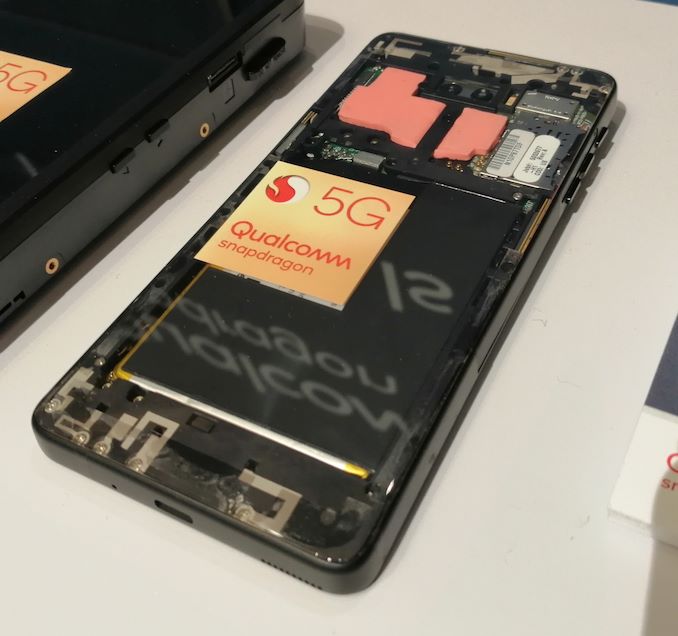
One of the exciting things on display at Qualcomm's Snapdragon tech summit was their 5G reference smartphone design – the one that gets handed around to the smartphone vendors so they can initiate their own designs. Reference platforms are usually base and ‘generally good’ all-around designs that OEMs can take as a starting point, and so Qualcomm had to address one of the main issues with 5G with its QRD: size. Thanks to the extra 5G modem and the many antennas required for mmWave frequencies, 5G requires a good deal more hardware than current 4G phones. Qualcomm's reference design, in turn, is of reasonable dimensions, and not completely out of place amongst the larger modern smartphones of today.
The 5G Qualcomm Reference Design (QRD)
The unit on display was essentially a phone with the rear panel removed and replaced with a acrylic cover, and then the whole device was in a acrylic box. Unfortunately this means that it was somewhat difficult to see inside, but we can take a look.
From side to side, the device was only slightly bigger than some of the larger smartphones we see on the market today. That edge to edge space in the bottom half is taken up mostly by battery, which is an odd shape because that Qualcomm 5G Snapdragon logo is actually taking up some z-height in the device in that area. The main part is in the top half however.
In yellow I have labelled the three mmWave QTM052 antennas in the unit. If you remember back to when Qualcomm announced these, they were mentioned as small, but it wasn’t until I saw one in person that I realised how small. Nonetheless, in order to make this device mmWave capable, there needs to be three and they have all been installed width-ways into the edge of the device. This means the device is actually around 9mm thick altogether, slightly larger than the flagships we see today,
This shot shows it a little better, with a QTM052 in the background.
It’s worth pointing out that each of these three antennas is connected via cables to access points on the PCB: four per antenna. The others area harder to see, but the antenna on the left has the connections here exposed. This is suitable for a reference design, whereas a modern flagship will be able to put the connections in a more integrated design to save on volume.
On the right hand side here, we can see the two-module camera solution. Ttechnically the S855 only supports two cameras, but that can be expanded by muxing or using different sensors and software tricks to make it work. To the right and below the caera module is where we see what looks like the SIM tray holders. That is surprising given the volume rockers nearby. There are a couple more jumper points to the left of the tray, but these are unconnected. This could be for a fourth mmWave antenna (the Moto mod has four, for example) when the device is put together, though at least the last time Qualcomm was talking about the QTM052, they indicated that they were expecting smartphones to only use three such antennas.
Thankfully this device was USB Type-C. But here you can see the thickness of the reference design again.
What I’ve marked here in yellow is a rigid metallic beam that seems to go across most of the top half of the device (and around the edge of the battery). Normally I would call this a stiffener, although it could also be to aid cooling. It looks quite sizable.
It’s hard to tell what is under the rest of the unit. We can assume that the pink foamy area (it’s definitely a foam) is covering something vital, as well as that big 5G sticker.
Qualcomm usually gives a small number of select journalists and analysts some time with the QRD before the first devices are launched to allow us to gauge what Qualcomm expects performance to be. Hopefully we will get our hands on one to test shortly.


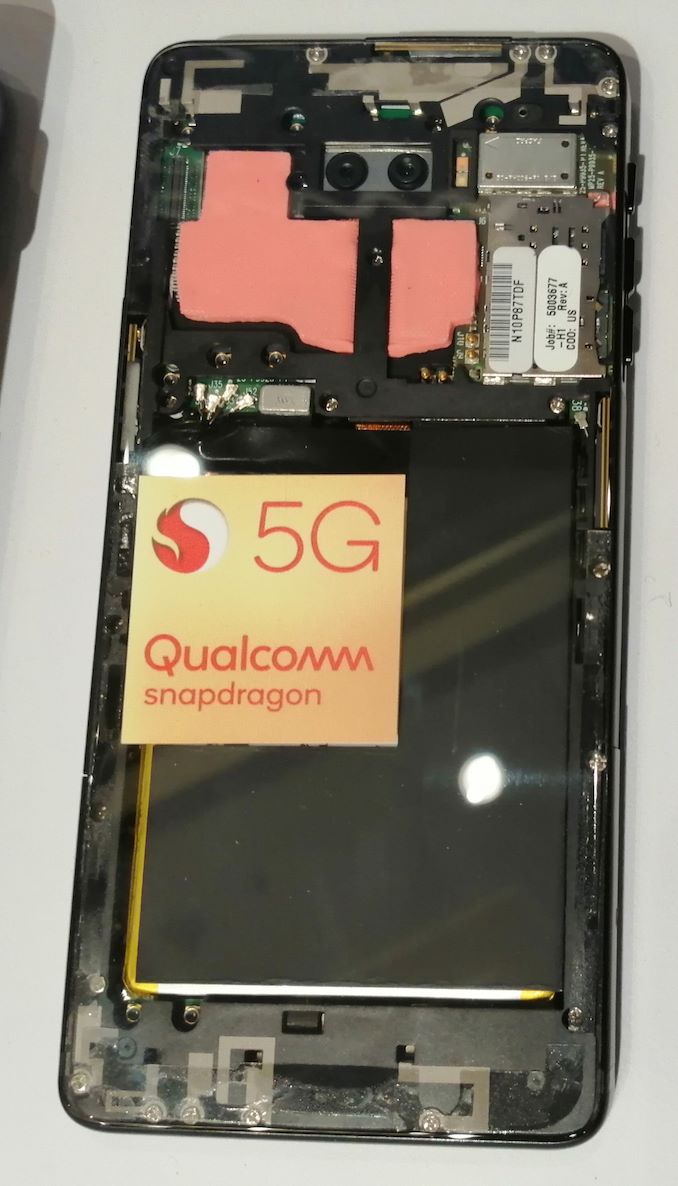
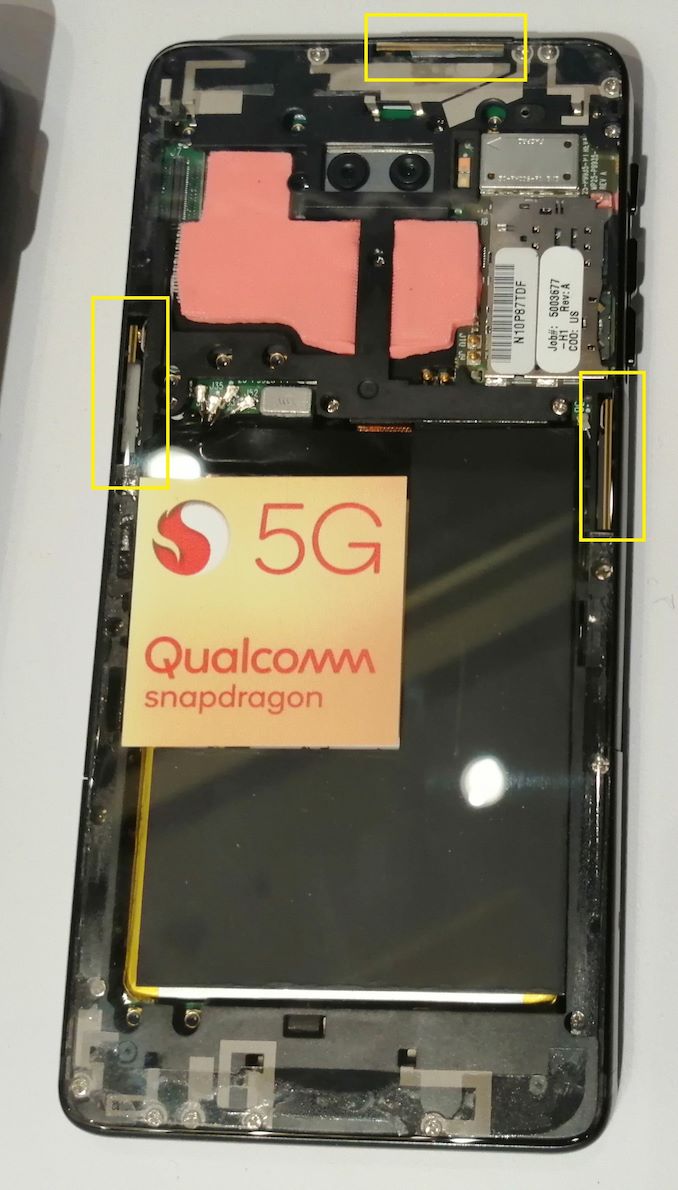
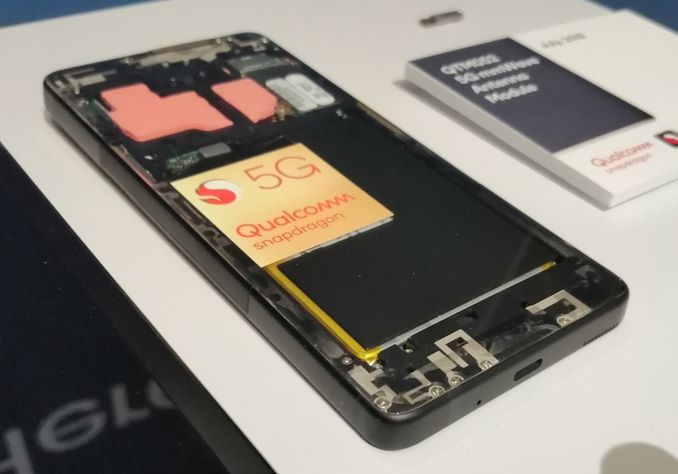
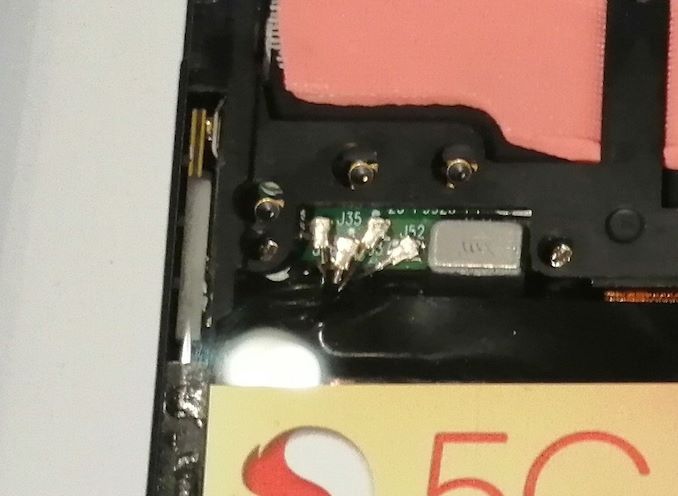
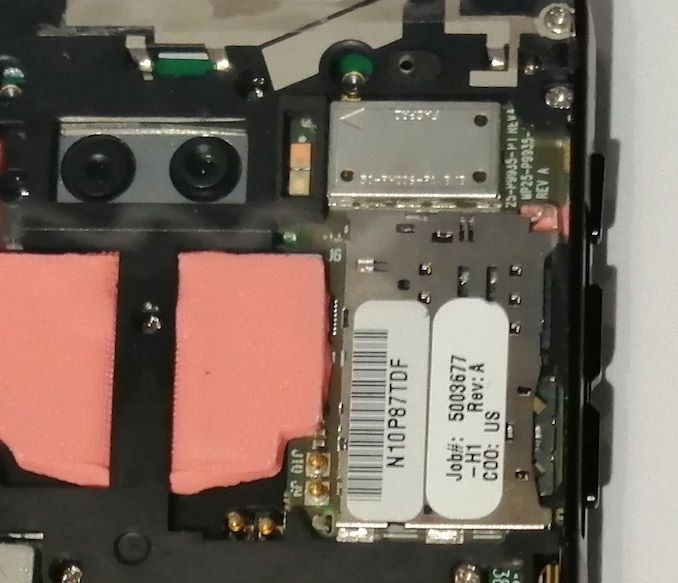

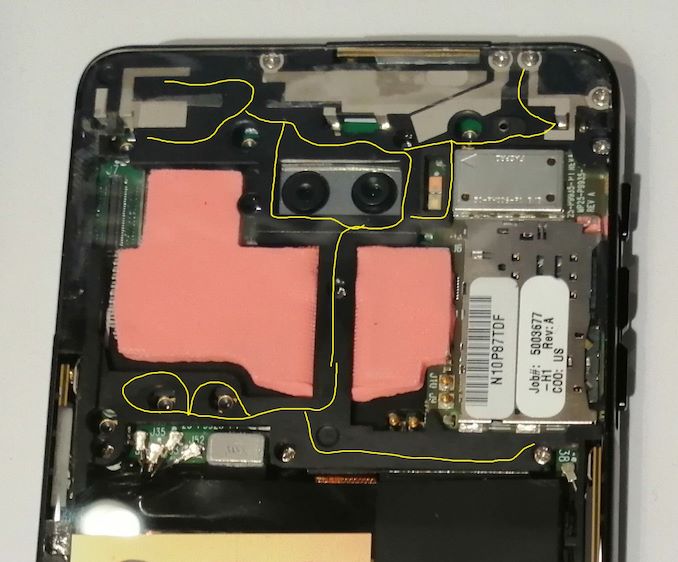









12 Comments
View All Comments
cerfcanuck - Tuesday, December 11, 2018 - link
You might want to replace references to "Perspex" with something more generic like "acrylic" or "acrylic glass". Most North Americans wouldn't know what you were talking about; I suspect Europeans might be equally baffled by "Plexiglas". :-)peevee - Tuesday, December 11, 2018 - link
This!" with a Perspex cover"
Unless it was that specific brand (why would Qualcomm use this?) it is just incorrect, but even if it is, using a brand of arcrylic cover makes no sense.
Ian Cutress - Tuesday, December 11, 2018 - link
Good point. Edited :)DanNeely - Tuesday, December 11, 2018 - link
Depends how long we've been on the internet. I've picked up enough British over the years to know what it was.Murloc - Tuesday, December 11, 2018 - link
I'm continental european and I know plexiglas (I may have learned it from zoo tycoon as a kid tho), but I've never heard perspex before in my life.Going for generic clear plastic or acrylic or whatever is a better idea anyway.
Death666Angel - Tuesday, December 11, 2018 - link
Plexiglas is of German origin, so I doubt "Europeans" won't know it. :) I only learned of Perspex through the Youtube channel Bigclivedotcom. US channels usually referred to it just as acrylic. Cheers!Barilla - Wednesday, December 12, 2018 - link
European here, commonly use "Plexiglass", or just "plexi" and never had anyone not know what it is. On the other hand, this is first time I see "Perspex". I guess your mileage may vary :)Dragonstongue - Tuesday, December 11, 2018 - link
larger phone because it has a good size battery AND components to back up the reason why it is larger/thicker and potentially much better made to increase durability, why not?Unlike many of these so called "flagships" that are as thing as possible, heat up too quickly and burn through their :dinky: battery considering the "specs" at an ever increasing price point for these glass shatter if look at the wrong way phones.
I will take the thicker phones that have ample room for battery and durability as part of their design thank you. Not mind paying for the "privilege" ^.^ (on another note, why do these phone makers use a "hardened" form of polycarb for the phones especially the all back covered ones to avoid the shatter ability O.o)
StormyParis - Tuesday, December 11, 2018 - link
Device porn is always fun. Thanks !brakdoo - Tuesday, December 11, 2018 - link
Regardless of the design: What's the state of mmwave anyway? Last time I checked it was pretty bad during heavy rain or without having a line of sight with the tower. All "real world" tests were focused on mmwave equipment mounted outside the customers building (have seen Samsung equipment used by O2 in Hamburg and the famous Huawei 5G mmWave outdoor unit).